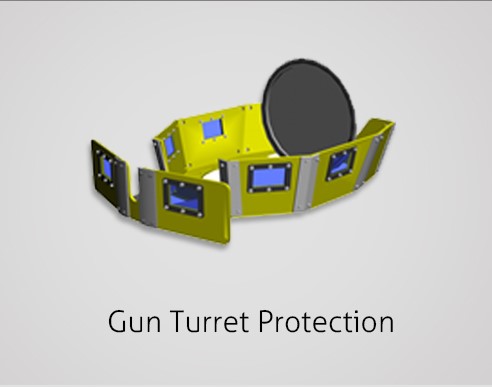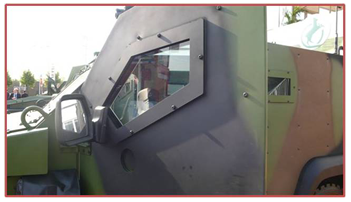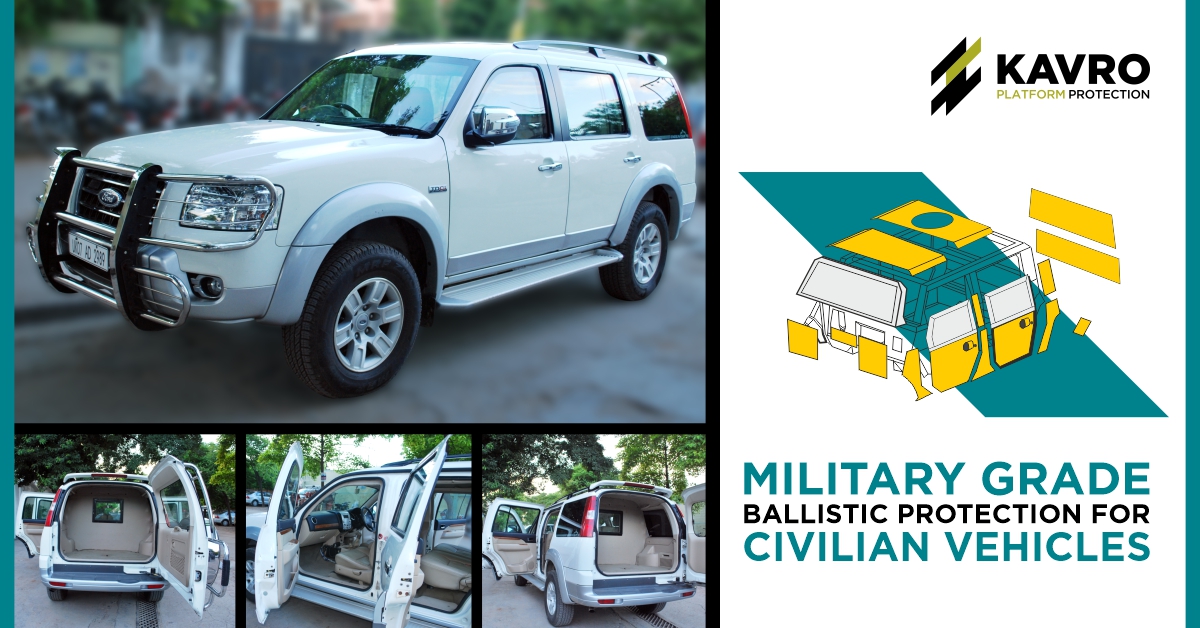The official car of the President of the United States is aptly nicknamed – The beast. The US President’s armored car features 8-inch thick doors and 5-inch thick bullet-resistant glass that ensures ballistic protection even against rocket-propelled grenades. The car's weight nearly approaches ten tons, due to which its top speed is limited to about 100 km/h. Though this is a small compromise to protect a country’s head of state, the same cannot be applied to armoring vehicles for civilian purposes.
Weight of armoring solutions has been a perennial issue that has always led to compromises in vehicle performance in terms of reduced fuel efficiency, lower payload capacity and increased maintenance costs. Therefore, armouring a standard civilian car for ballistic protection with traditional armouring solutions was not feasible, as it severely limited the car’s performance.
However, the lightweight ballistic armouring technologies used by militaries for vehicle protection have opened up the scope for civilian armoured vehicles. Until recently, armoured cars have been used solely by the head of state, diplomats, bank’s cash carriers and law enforcement agencies. Given the ever-increasing crime rate and security challenges, there has been a steady demand for bullet-resistant cars from celebrities, high net-worth individuals (HNIs) and business owners. Such individuals are most vulnerable in their cars while on the road. In case they run into gun-wielding street thugs, the car cannot protect them from the hail of small arms fire. That’s why armoured cars have gained popularity as they provide a greater sense of security. Even automobile manufacturers such as BMW have started offering their products with ballistic protection features.


The paradigm shift from steel to composite material as armouring solution has been the game-changer technology. When compared to steel, composite material is lightweight while offering the equivalent degree of ballistic protection. For instance, to provide NIJ Level III protection against assault rifles such as AK-47, a ballistic steel plate would weigh about 48 kg per square meter. Whereas, composite material with NIJ Level III protection capability would weigh just around 25 kg per square meter. This lightweight bullet-resistant composite material has allowed even civilian passenger cars to be armoured for ballistic protection by drastically reducing the weight penalty of armouring the vehicle.
MKU has the knowledge and technology to deliver the highest quality of ballistic armour solutions in the world. Its flagship ballistic protection solutions leverage Generation 6 (Gen 6) armouring technology, which is based on ultra-lightweight composite materials. The Gen 6 armouring solutions are available for military vehicles as well as civilian vehicles.
In addition to being lightweight, the Gen 6 armouring solutions are also flexible and mouldable, thus allowing the ballistic panels to be cut out as per the structure of the vehicle’s chassis without resulting in any vehicular changes. Therefore, the total add-on weight due to ballistic armouring is lower when compared to the traditional approach with steel, which warrants reinforcement of the vehicle chassis to sustain the overtly heavy steel armour. Also, armouring with steel might necessitate a vehicle’s drivetrain up-gradation. Whereas, armouring with composite structures results in retaining the optimum performance of the car without hampering its speed and manoeuvrability while offering an enhanced life of the vehicle and lower ownership cost.
It is necessary for armoured civilian passenger cars to keep a low profile while on road and not to catch unnecessary attention. MKU’s modular armouring solutions ensure that there is no structural and mechanical change to the car, and the ballistic armour capability of the car remains discreet.
As there is no guarantee of security from gun-toting criminals on the streets and roads, an armoured car provides the assurance of safety to the passengers from all kinds of ballistic threats. With such advanced armouring solutions, MKU has enabled car armouring even for civilians at its best.


 LOGIN
LOGIN








